Now FRANCE is following Germany’s lead and reintroducing border controls due to ‘serious threats from terrorists and migration flows’, the latest blow to the EU’s Schengen system
France plans to increase the intensity of border controls with its European neighbors amid fears of uncontrolled migration and terror threats, just weeks after Germany announced a similar policy.
French authorities informed the European Commission last week that borders with six of the neighboring Schengen countries – namely Belgium, Germany, Italy, Luxembourg, Spain and Switzerland – will be tightened with increased controls for at least six months from November 1.
The checks will be applied to travelers entering France by land, sea and air routes from all six countries and will expire on April 1, 2025, but authorities have said they could be extended further.
A statement from the French government said the controls had been introduced due to “serious threats to public order, public order and internal security caused by high-level terrorist activities.” individuals’.
It is the first time that France has introduced such controls since the Covid-19 pandemic. Migrants and unauthorized travelers may be turned back at the border and suspects of criminal activity may be arrested.
German police stand guard at the border with France as all German land borders are subject to random checks to protect internal security and reduce irregular migration
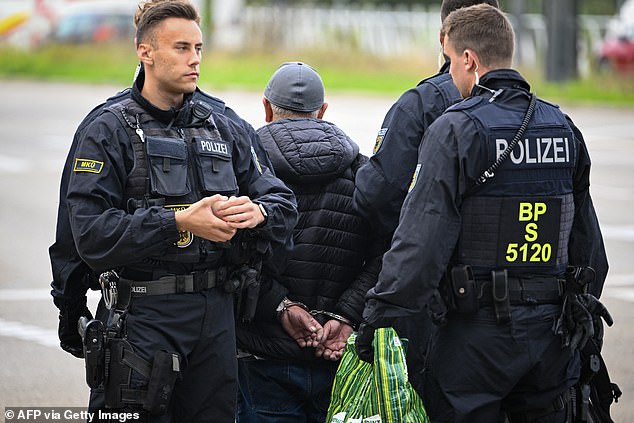
Officers arrest a man at the German-French border in Kehl, West Germany
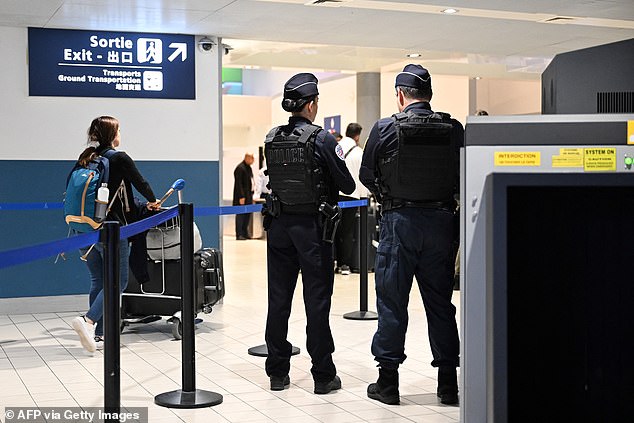
Police stand at a customs checkpoint at Roissy-Charles de Gaulle Airport, in the northern suburbs of Paris, on October 18, 2024
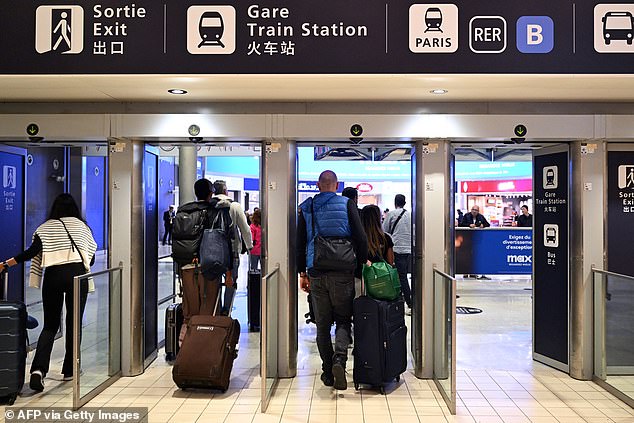
Passengers passing through an exit at Roissy-Charles de Gaulle Airport
Under the Schengen Agreement, 29 European countries agreed to abolish internal border controls with the aim of achieving freedom of movement across the continent.
Twenty-five of the 27 EU Member States are parties to the agreement, along with Iceland, Liechtenstein, Norway and Switzerland.
However, the Schengen Borders Code allows Member States to introduce temporary border controls as a last resort if authorities consider that there is a serious threat to public order or internal security.
These temporary restrictions can last up to six months. Therefore, the French authorities have set the expiry date of the upcoming measures as April 1, 2025.
But such controls could be expanded if threats are believed to persist.
The measures that will come into force in France from November 1 will in no way affect the rights of Europeans and other citizens to travel to France, and will only apply to travelers arriving from Belgium, Germany, Italy, Luxembourg, Spain and Switzerland are coming.
But people entering France from these states may face long queues at border points.
The move comes weeks after France’s EU partner Germany introduced similar controls in September, citing a wave of Islamic extremist attacks and concerns about rampant migration.
German Interior Minister Nancy Faeser emphasized at the time that the move would help “stop criminals and identify and stop Islamists at an early stage.”
The announcement drew criticism from several European partners, most notably Austria, which said it would refuse to accept migrants turned away at its shared border with Germany.
The European Commission, meanwhile, warned that EU members should only impose such steps in exceptional circumstances.
But German government figures published shortly after the controls came into effect produced shocking revelations.
In just five days after the reintroduction of border controls at all German borders, the federal police detected almost 900 unauthorized entries.
Of these, 640 people were returned, 17 extremists identified and 114 arrest warrants executed.
In an interview with the German magazine Focus, Manuel Ostermann, deputy federal president of the Federal Police Union, said: “We are witnessing the efficiency of the federal police and, above all, we are seeing reaffirmation of the need for border controls.”
Those in favor of reintroducing the restrictions argued that this was only necessary because controls at the EU’s external borders had failed.
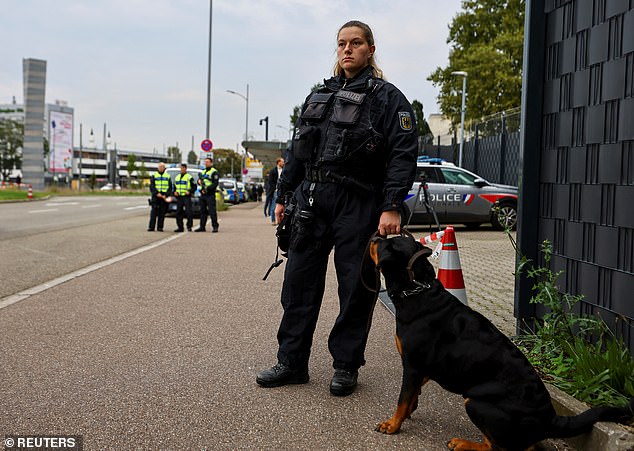
A German police officer with a watchdog at the border with France, as all German land borders are subject to random checks

German police check people arriving from France at the German-French border on September 16, 2024
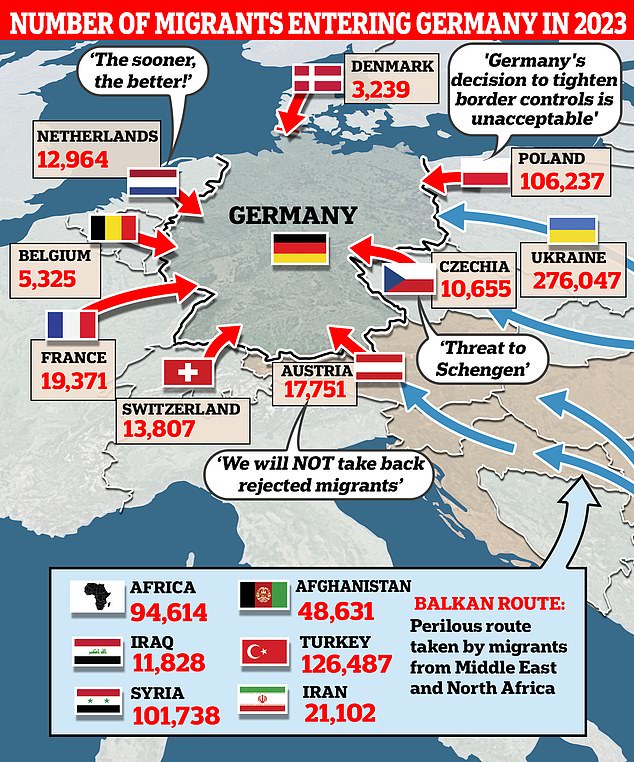
France’s introduction of tougher checks also comes weeks after an EU plan to impose new border controls on non-EU nationals was suspended indefinitely, sparing British holidaymakers from an ordeal that many feared would lead to chaos on airports and border checkpoints.
The EU confirmed earlier this month that the so-called Entry/Exit System (EES), which was originally due to be rolled out on November 10, had been put on hold because the bloc’s key members – namely France, Germany and the Netherlands – did not . ready to execute it.
The EES plans to abolish passport checks and stamps and replace the current system with a raft of biometric tests that will require non-EU passport holders, including Britons, to submit fingerprints and facial scans on their first entry into the Schengen zone.
Any subsequent visit would have prompted a new biometric check, a plan that many feared would cause serious logistical problems for visits to the continent.
But following a meeting of EU home affairs ministers in Luxembourg, Brussels announced that the launch date is ‘no longer on the table’ – with no new schedule in sight.
This is the third time the EES has been postponed – and unlike previous delays, this one makes no promises about a new timeline.
The automated system was first agreed in 2017 and would replace the manual stamping of passports and automatically record the entry and exit dates of visitors.
This, it is argued, would help authorities monitor overstays and denied entry, and crack down on illegal migration.
But news of the plan raised fears of queues and longer wait times for people traveling to Europe on trains, ferries and planes, with Brussels ultimately forced to reconsider the original launch date last year amid warnings that border crossings would be snapped if the system were also launched. abruptly without the required infrastructure in place.
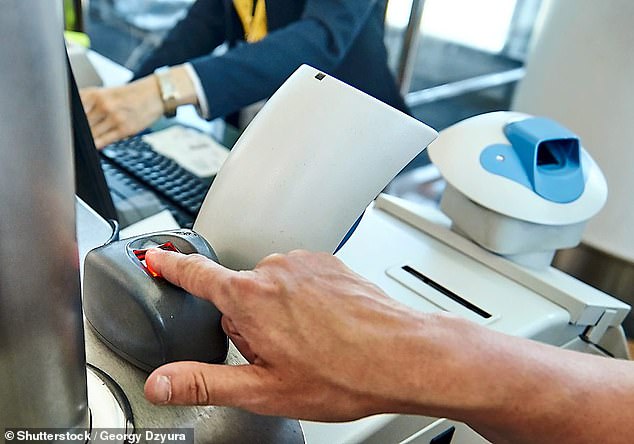
Under the EES, visitors must show a facial image and leave four fingerprints every time they enter the continent
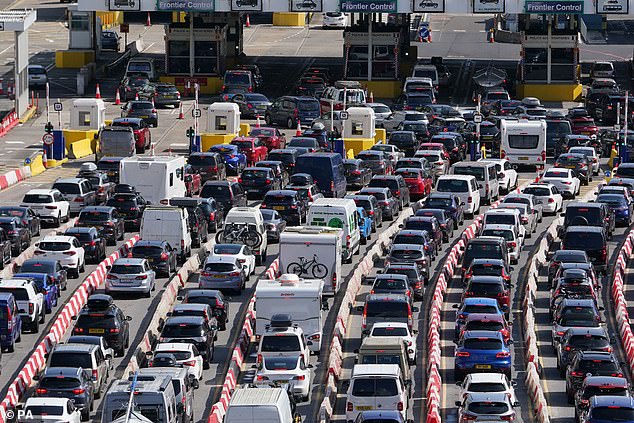
Queues at the Port of Dover – one of the locations where the delayed EES is being introduced
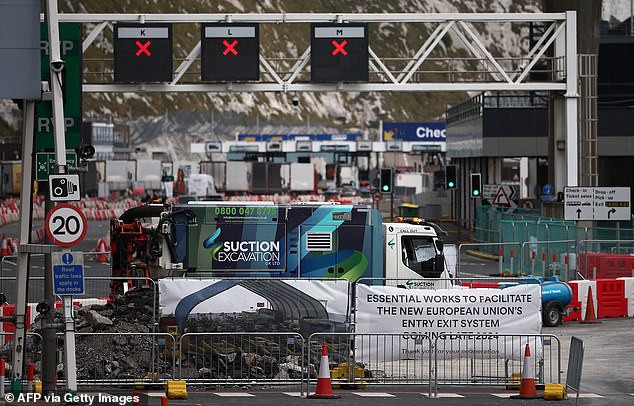
A sign warns travelers arriving at the Port of Dover about the work underway to facilitate the European Union’s new and much delayed entry-exit system
A British parliamentary committee said earlier this year that some British passengers could initially expect delays of up to 14 hours, prompting harsh criticism of the plan from this side of the Channel.
Calls to introduce the EES early this year were rejected by France amid fears that two major sporting events – the Rugby World Cup and the Paris Olympics – would be disrupted, so the launch date was moved to October 6 and then again to 10 November.
The delay in the rollout of the EES could be seen as a victory for British travellers, but supporters of the plan say the move exposes deeper cracks within the EU.
Germany, France and the Netherlands, which together handle more than 40 percent of all non-EU traffic into the bloc, have struggled to install the IT infrastructure needed to implement the complicated new system.
